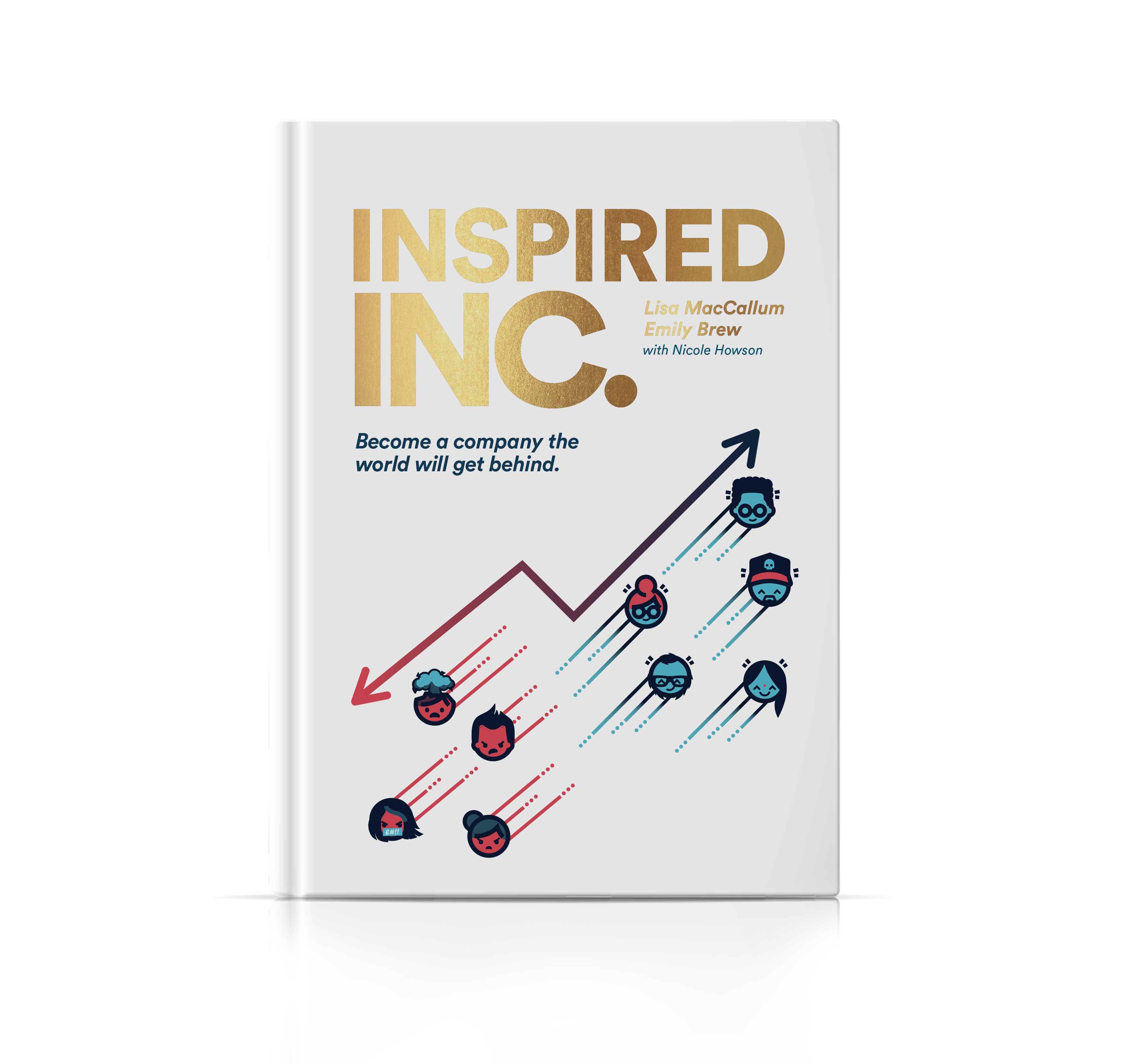Leaders of Inspired Companies are driven by a larger purpose – not by the false notion that their primary job is to drive profit. For them, it’s not just lip service. It’s the motivation for everything they do. The world is clear on where they stand.
Take Elon Musk. He has been unwavering in his message. Whether it’s opening up access to outer space (SpaceX) or advancing sustainable energy (Tesla), it’s not difficult to figure out what Musk is fighting for. Peter Diamandis, innovation pioneer and founder of the XPRIZE, believes Musk’s clear and obvious purpose contributes to Tesla’s reputation as an innovator. In an informal poll, Diamandis asked his Twitter followers which company they thought was most innovative: Google, Amazon, Facebook, or Tesla. Tesla blew the competition away. Among the reasons Diamandis identified are a transformative purpose – and a passionate, outspoken founder.88 We all know Musk is not perfect. Smoking marijuana during a live webcast in California (albeit where the drug is legal) was not his best move. Neither was his August 2018 tweet that said he was “considering taking Tesla private … ” sending markets into chaos and landing him a US$20 million fine and a three-year ban on serving as Tesla’s chairman.89 But we are not looking for perfection in our examples. We are looking for guidance from leaders on their best days.
Arianna Huffington is another leader who forges her own path while always being clear about what she stands for. She founded Huffington Post (now called HuffPost), which gave the crowd a voice. Whether through user-generated content or the site’s ubiquitous comments, Huffington Post was an early player in citizen journalism. That shifted over time as the platform grew and needed to balance quantity with quality, but the fundamental premise remained the same. Diverse voices provide relatively uncensored points of view on just about every imaginable topic. What this did was facilitate a global conversation, and Huffington has been at the center of it for well over a decade. She’s an author, a prolific speaker, and a regular contributor to her own platform. Even after she sold the platform (to AOL in 2011 for US$300 million), she maintained editorial control for another five years – a period that included the launch of the Purpose + Profit section of the site.
Arianna Huffington is a leader the world has gotten to know. Her companies were founded on the idea of giving people a place to speak out. And even though she’s no longer at HuffPost, the company just launched a new mission to tell the stories of people who have been “left out of the conversation.” It would seem that Huffington has inspired the next generation of leaders at the company she founded.
At TOMS, the mission statement is To make life more comfortable – for everyone. How’s that for an idea we could all use? Plenty of people know the TOMS story. Blake Mycoskie, the company’s founder, went to Argentina and saw kids in need of shoes. A short time later, he launched his buy- one-give-one business model. Fewer people know why they know this story. It’s because TOMS puts far more effort into storytelling than paid marketing. (The ratio is something close to Everything: Nothing.)
Mycoskie has been just about everywhere telling the TOMS story. Whether it’s at trunk shows, business symposiums, or social change conferences, Mycoskie can be found there.
The impact of this is measurable, at least according to the Brand World Value index. Introduced in Chapter 6, this tool quantifies the extent to which consumers “perceive a brand to have a purpose bigger than making money, the degree to which that purpose aligns with their own values, and the extent to which they would be willing to actively support the brand’s purpose.”90 For those under 35 years old – the ever-important, ever-growing, increasingly wealthy millennial demographic –
TOMS ranks 22nd. To put that in perspective, Nike ranks 26th, despite spending a whole lot more on marketing.
There’s no more important time to reinforce the mission or the purpose of a company than when people perceive a threat to it. When Microsoft acquired LinkedIn in 2016, CEO Jeff Weiner sent an open letter to his employees to remind them of the company’s vision and why it remained as important as ever. Now LinkedIn’s mission is a bit dry: Connect the world’s professionals to make them more productive and successful. On the other hand, their vision – to create economic opportunity for every member of the global workforce – is insanely inspiring and what we would consider a statement closer to a purpose statement or Inspired Mission. Regardless, it’s that sentiment that seemed to compel Weiner to write this:91
Every day I come to work, I’m primarily guided by two things: First, realizing our mission and vision… Whether it’s worker displacement, the skills gap, youth unemployment, or socio- economic stratification, the impact on society will be staggering. I’ve said it on multiple occasions and believe it even more so every day: creating economic opportunity will be the defining issue of our time. That’s why I’m here and why I can’t imagine doing any other job. Simply put, what we do matters, and matters more than ever.
The second thing I focus on every day is making our culture and values come to life. Ten years ago, had you asked me about culture and values I would have rolled my eyes and recited a line from Dilbert. But when I started as CEO I began to appreciate just how important they were. Culture and values provide the foundation upon which everything else is built. They are arguably our most important competitive advantage, and something that has grown to define us. It’s one thing to change the world. It’s another to do it in our own unique way: Members first. Relationships matter. Be open, honest, and constructive. Demand excellence. Take intelligent risks. Act like an owner.
That’s who we are. That’s LinkedIn.
LinkedIn’s reputation and the ability of its leaders to work effectively with the crowd may actually have been central to Microsoft’s acquisition strategy. When it was announced in 2017 that Reid Hoffman, LinkedIn’s founder, would be joining Microsoft’s board, Wired argued that it was all part of the plan to reorient Microsoft.92 “There are few people in Silicon Valley as connected to its heart as Hoffman,” the author wrote. Microsoft, on the other hand, is notoriously disconnected from the Silicon Valley crowd and the innovation and talent the Valley is known for. Adding LinkedIn, along with Weiner and Hoffman as leaders, just might turn out to be the most game-changing thing Microsoft has done in decades.
All of these leaders understand and believe wholeheartedly in the ideas their companies stand for. They also know that they need more than faith to Shake up the System. More than ever before, leaders need to get out of their corner offices and connect with the real world.
A lot.

Excerpt from Inspired Inc. by Lisa MacCallum and Emily Brew with permission from the author and publisher.
Follow us here and subscribe here for all the latest news on how you can keep Thriving.
Stay up to date or catch-up on all our podcasts with Arianna Huffington here.



